Lost treasure has been the focus of countless books, myths, and movies for as long as we’ve been telling stories. History is full of tales about stashes of treasure left behind by pirates, scoundrels, and thieves, and lucky for us, some of that fortune is still up for grabs. Here are five undiscovered treasures, along with a few other stories of lost treasure in California.
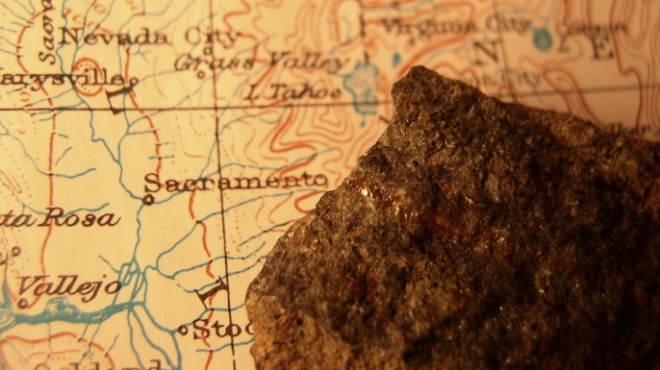
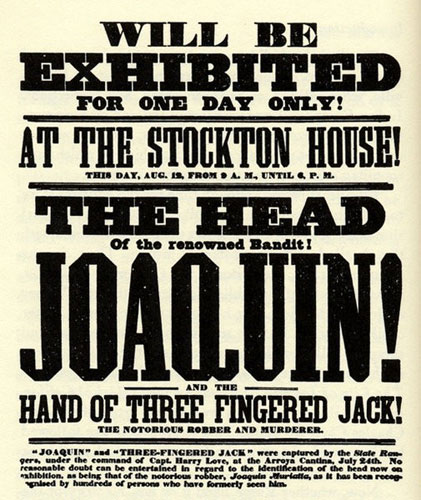
1.) It was 1851 when Joaquín Murieta, (known as the real-life Zorro) and his gang raided several camps in the mountains east of Chico, California. It was the heyday of the gold rush, and the “Argonauts” or forty-niners had been pouring into both the Mother Lode (ie, the Sierras east of Sacramento) as well as the northern mines. Joaquín Murieta and his gang were often known to hide their stolen loot in the area of their robberies. On one occasion Murieta and his right-hand man, Manuel Garcia, known as “Three-Fingered Jack,” robbed a stagecoach along the Feather River. The strongbox was said to have contained some 250 pounds of gold nuggets worth $140,000 at the time. Allegedly, the pair buried the strongbox on the banks of the Feather River, in a canyon a few miles south of Paradise, (present Butte County). According to Wells Fargo officials, the stolen gold has never been recovered.
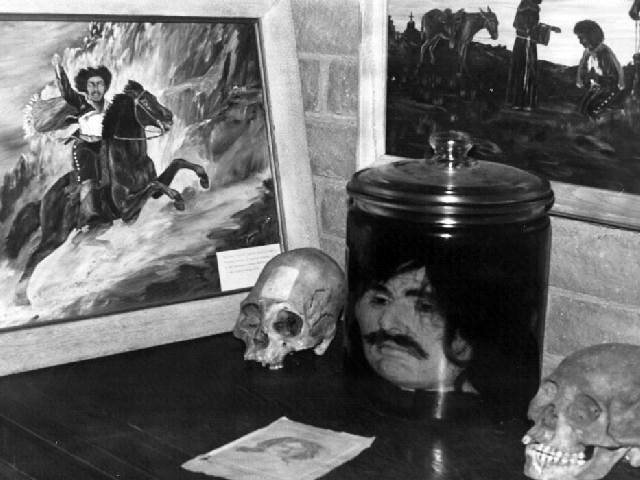 Other caches of Joaquín Murieta, or one of them, anyway, is said to lie in the Eastern high desert region of the northern mines. Murieta is believed to have another stash that he had to bury somewhere between Burney and Hatcher Pass, close to Highway 299. That treasure has never been found. Another treasure that remains lost is Murieta’s treasure of $200,000 in 1860s dollars, which is believed to be between Susanville and Freedonyer Pass. This is close to what is known today as Highway 36.
Other caches of Joaquín Murieta, or one of them, anyway, is said to lie in the Eastern high desert region of the northern mines. Murieta is believed to have another stash that he had to bury somewhere between Burney and Hatcher Pass, close to Highway 299. That treasure has never been found. Another treasure that remains lost is Murieta’s treasure of $200,000 in 1860s dollars, which is believed to be between Susanville and Freedonyer Pass. This is close to what is known today as Highway 36.

2.) Richard Barter, also known as “Rattlesnake Dick” and Dick Woods, was born in Quebec, Canada, the son of a British officer around 1833. Though little is known of his early history, he was said to have been a reckless sort of boy.
In March 1856 seven men proceeding with a mule train over Trinity Mountain en-route from Yreka to Shasta were held up by a gang of five masked bandits and robbed of $25,000 in gold. The gang buried the gold in several places on the mountainside, and then fled.
They were rounded up a few days later. The notorious “Rattlesnake Dick Barter,” the Pirate of the Placers, engineered the crime, though Barter, nabbed while stealing mules to be used to carry off the loot, was unable to take part. About $15,000 of the gold was recovered in a ravine 12 miles from Mountain House, on the headwaters of Clear Creek. The melting of the snow and the coming of spring changed the look of the terrain. Attempts to find the rest of the loot failed, and $10,000 (now several times in value by today’s gold price) still lies somewhere on the mountain.
The final heist occurred when Rattlesnake Dick hooked up with the Skinner boys. He decided to avoid his old haunts of the Mother Lode and concentrated on the rich spoils of the northern diggings. The robbery was flawless, but the Wells Fargo organized posse was hot on their tails. The gang split up. George Skinner was suppose to meet Rattlesnake Dick and the rest of the bandits at Folsom, however, the gold was too heavy to bring down the mountain pass and George decided to bury half of the loot in the mountains.
No one has been able to find the remaining $40,000 worth of gold bullion buried on Trinity Mountain; even Rattlesnake Dick couldn’t find where George had buried the treasure.

3.) On May 1892 one of the most famous gold heists made the new town of Redding famous throughout the state. The Ruggles Brothers held up the stage to Weaverville, just west of Redding, in what is known today as Middle Creek road, and made off with the strong box loaded with gold. As soon as the stage headed around the turn the younger brother Charles jumped out of the Manzanita chaparral with his shotgun aimed, ordering a halt. The driver complied, but unbeknownst to the Ruggles, the stage had an armed escort, Buck Montgomery of the Hayfork Montgomery clan.
In an effort to save himself and his brother, John told the authorities that the stage guard, Montgomery, was in cahoots with them. He also revealed where he had hidden the gold, telling authorities that he had hidden it in Middle Creek. Attached to the strong box was a floating device that came within a foot of the top of the water that would help him in finding the stash later.

The two boys were lynched in Redding July 24, 1892. The mob took the two from jail, led them to a tree on the northwest corner (Redding Blacksmith shop at the time) where Shasta Street met the railroad tracks, the ‘backyard’ of the current Paul Stowers Garage business. Even on the improvised gallows, John Ruggles refused to divulge where he stashed the loot.
Authorities went back and scoured the area, and even found the express bag pouch (with letters intact) in the Lower Springs area, but the $5,000 in gold coins still remains undiscovered, though over a century of seekers have tried.
The place to begin is along the unpaved section of Middle Creek Road between Iron Mountain Road and the Shasta Transfer Station in Old Shasta.
 4.) Located in the barren, sun scorched desert of southern California is an enigmatic and somewhat unearthly sight; a lake sprawled out amidst the parched, baked earth, ringed by wind blasted ghost towns and with beaches of crushed fish bones rather than sand. This is the Salton Sea, a shallow, saline lake that lies along the San Andreas Fault.
4.) Located in the barren, sun scorched desert of southern California is an enigmatic and somewhat unearthly sight; a lake sprawled out amidst the parched, baked earth, ringed by wind blasted ghost towns and with beaches of crushed fish bones rather than sand. This is the Salton Sea, a shallow, saline lake that lies along the San Andreas Fault.
Of all the legends about lost and found, and lost again treasures in the Southwest, there is none more mystifying than the enduring tale of a large sailing vessel which lies, full of riches, somewhere in the restless sands of California’s Salton Sea basin, toward the northern end of the Sorora Desert.
Emigrants have reported such a ship, prospectors and other travelers who claim that she lies with her bow buried deep and her richly carved stem raised high above the sands.
 In the 16th century, the Salton Basin was flooded very much like it is now, with a huge lake lying exactly where the current Salton Sea is found. This lake was called Lake Cahuilla. It was an enormous body of water that was the size of the state of Delaware and connected to the Sea of Cortez, which in modern days is known as the Gulf of California. It is here that the story of a lost Spanish Galleon loaded with pearls and gold coins comes in.
In the 16th century, the Salton Basin was flooded very much like it is now, with a huge lake lying exactly where the current Salton Sea is found. This lake was called Lake Cahuilla. It was an enormous body of water that was the size of the state of Delaware and connected to the Sea of Cortez, which in modern days is known as the Gulf of California. It is here that the story of a lost Spanish Galleon loaded with pearls and gold coins comes in.
The story goes that the galleon ran aground on a sandbar or landslide, after which the crew were forced to abandon it and escape overland through the desert, leaving the ship and its cargo of gold and pearls behind. Over time, the lake disappeared and it is said the ship sank beneath the sands.
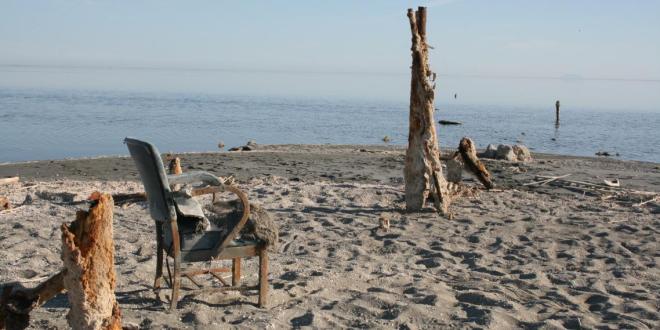
Is there an ancient sailing craft lying half-concealed in the sands of the Colorado Desert?
5.)In the early 1900s train robber and gunrunner, (and I would add escape artist to his titles) Roy Gardner, began his career of thievery in Arizona and California. On April 16, 1920 the curly-headed young man stole $78,000 in cash and securities from a mail truck in San Diego, California. Though it was a smooth job, the outlaw was arrested just three days later. Soon his name would become as well known to the lawmen of California as Jesse James.
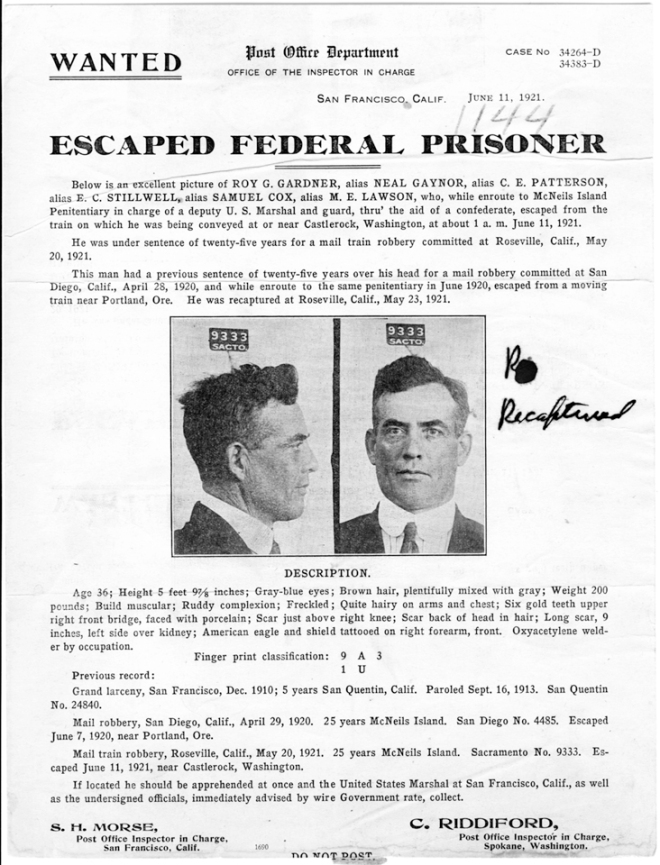 On May 19, 1921, Gardner boarded the mail car of a Southern Pacific train, tied up the clerk and fled the train in Roseville, California, with $187,000 in cash and securities.
On May 19, 1921, Gardner boarded the mail car of a Southern Pacific train, tied up the clerk and fled the train in Roseville, California, with $187,000 in cash and securities.
Two days later Gardner was arrested again while playing a game of cards in a Roseville, California pool-hall. Attempting to reduce his long sentence, he offered to lead the lawmen to the money. However, he must have changed his mind when, after leading the officers on a wild goose chase of the surrounding hills, he announced, “I guess I’ve forgotten where I buried that money.”
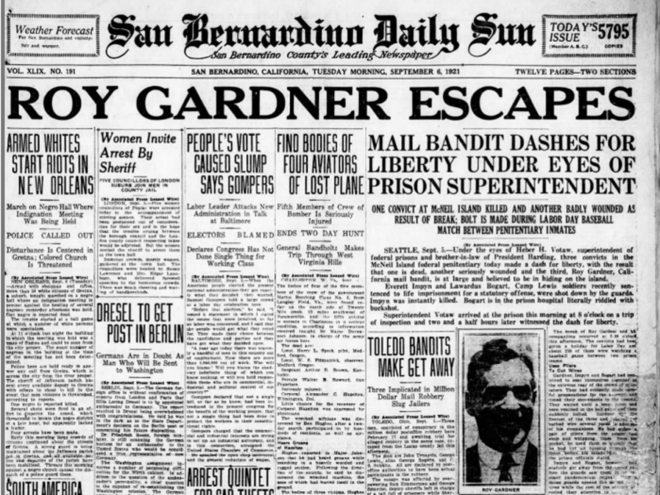 After many escapes from other prisons he was later moved to Alcatraz to complete his sentence. Gardner made several futile appeals for clemency, but was not released until 1939. He ended his own life in a small hotel room in San Francisco, explaining that men who served more than five years in prison were doomed and that he was old and tired.
After many escapes from other prisons he was later moved to Alcatraz to complete his sentence. Gardner made several futile appeals for clemency, but was not released until 1939. He ended his own life in a small hotel room in San Francisco, explaining that men who served more than five years in prison were doomed and that he was old and tired.
Thus ended a criminal career and somewhere, an estimated $250,000 of his loot still remains hidden. Gardner had neither the time nor the opportunity to spend his ill-gotten wealth, nor partners to share it with.
Legend has it that he hid $16,000 in gold coins in the cone of an extinct volcano near Flagstaff, Arizona before he was captured during a train robbery in 1921. But, where is the rest? California?
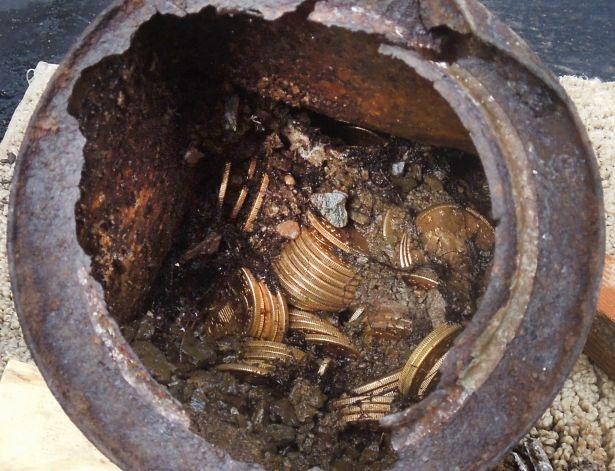
Not all lost treasures of California are related to the Gold Rush. During the wild and wooly days of Prohibition, a German whiskey smuggler named Carl Hause was doing a brisk business. Hause’s operations were located on Point Reyes Peninsula, at the edge of Drake’s Inlet just south of Inverness. The whiskey smuggler was said to have buried approximately $500,000 in gold-backed currency somewhere between…
Inverness and the old Heims Ranch. However, the liquor entrepreneur would not live to retrieve his ill-gotten gains as he was found shot to death in his car. The currency has never been found.
In 1862, the sheriff of Trinity County was not only responsible for upholding the law, but was also tasked with collecting taxes. On one occasion as he was traveling through the area, his saddlebag was filled with about $1,000 in gold coins and $50 gold slugs. As the sheriff and his horse were cautiously crossing a stream, the horse stumbled and the saddlebag filled with gold was dropped and washed down the creek. Though the lawman made an immediate search of the area, he was unable to find the bag. Soon, the county offered a reward of $250 for the recovery of the saddlebag, but despite diligent search efforts, including damming up the creek, it was never found. In those early days of California, assayers and private mines often minted gold slugs. Today, in addition to their gold value, they have also become major collectible items, and if the treasure were to be found today, some estimate it could be worth as much as a million dollars. The creek was located near Weaverville, California.
Pioneer Peter Lassen, became a very wealthy landowner and rancher in the 1820s and amassed thousands of acres along the south bank of Deer Creek. He is known to have buried his gold coins and dust in iron pots on his property near his home, at the confluence of Deer Creek and the Sacramento River at Vina, or along the Lassen Trail, which follows Deer Creek. Indians killed Lassen at the age of 30 and his treasure hoard was never found.
A stagecoach carrying 2 boxes of $50 gold slugs worth $128,000 was held up at Weed in 1859. A posse from Mt. Shasta came upon the scene less than a 1/2 hour later and took off after the outlaws. They came upon 2 pack animals on the western slopes of Mt. Shasta with empty saddlebags. Three miles beyond this point, they overtook the bandits and all were killed. It was reasoned that the gold, too heavy for a fast getaway, was buried and part of the posse searched the area for a week, but failed to locate the treasure.
The Eskridge outlaw gang buried the loot taken from two successful stage robberies near the Upper Bear Creek Crossing in 1881. The treasure has been estimated between $50,000 and $120,000 and has never been recovered.
John Ellison Trueblood came to California in 1852. He settled on a farm on the outskirts of Red Bluff. He buried his money, 100 to 200 rare octagonal $50 gold slugs, in an iron pot somewhere on his farm. He was killed in an argument over the Southern Pacific RR coming on his land and the secret of his hidden gold died with him. This cache is worth between $500,000 and $1 million today.
The Langley family operated a paying gold mine at (GT) Cherokee in the 1860’s in the Cherokee Hills. In their workings they found a sizeable quantity of raw diamonds and had accumulated quite a large amount of gold dust and nuggets. The Langley’s hid 2 saddlebags filled with their raw gold and diamonds about 1/2 hour’s horseback ride up the creek above their camp for safekeeping. Bandits attacked the family and the brother who hid the treasure was killed. Not knowing exactly where the cache was made, the family never recovered the treasure. The remains of a washout dam mark the location of the old Langley campsite today.
LOST GOLD MINES IN CALIFORNIA
Whether these tales of lost mines are fact or fiction, their legends are still alive for hopeful prospectors of California.
Cement Gold Mine of Mammoth Mountain
Goose Egg Mine of El Dorado County
Kanaka Jack’s Mine in Mother Lode Country
Gunsight Mine of Death Valley
Lost Pegleg Mine
